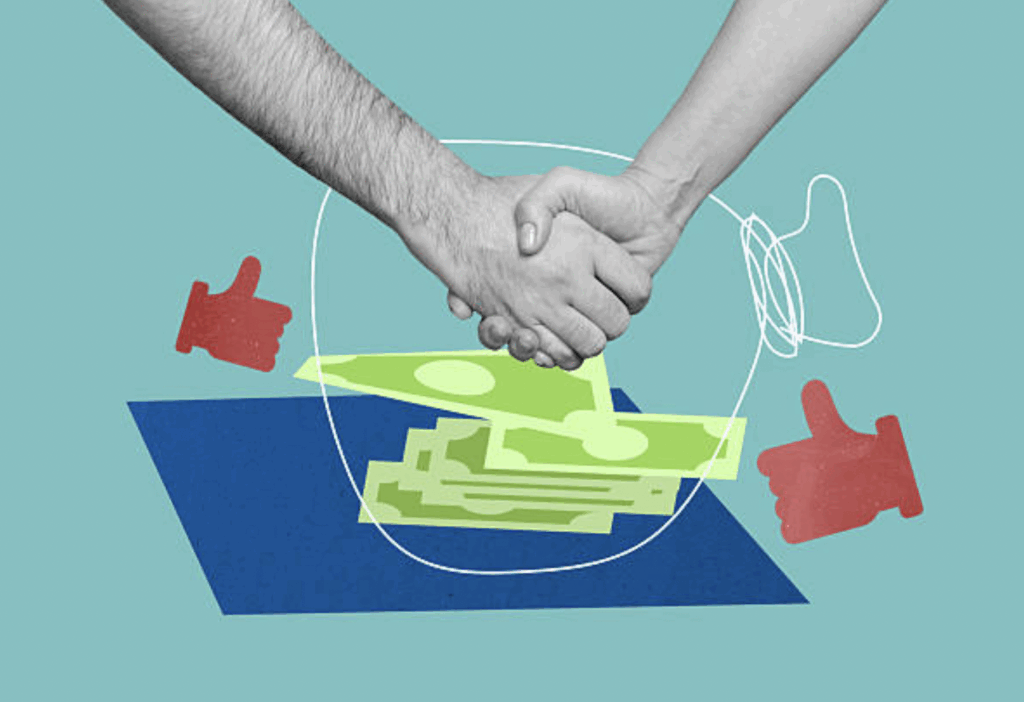Whether you’re running a startup, scaling a fast-growth brand, or trying to level up your existing Paid Media approach, one universal truth holds:
Your Paid Media strategy isn’t just about budgets — it’s about knowing your audience, creating content that connects, and investing where it drives results.
An effective Paid Media strategy helps you reach the right audience, at the right time, with the right message – driving awareness, engagement and conversions. When combined across channels (social, search, and display), it creates a powerful ecosystem that duels full-funnel results.
In this article, we’ll show you how to build a Paid Media strategy that works, explain what is Paid Media Strategy, as well as how different channels and formats play a role across the funnel, and share best practices for testing, optimizing, and scaling performance.
Where to start: How to build a Paid Media Strategy
Paid Media Strategy starts with building a plan, not relying on guesswork. Whether you’re investing small, or funneling large amounts, your approach should be built around four core concepts:
- A clear goal: The specific outcomes you are aiming for – think beyond just impressions or clicks, define goals that tie back to revenue or business growth.
- A hypothesis: An educated guess you can test, a hypothesis should be informed by what you already know about your audience.
- A test-and-learn-plan: Paid Media success is built on structured testing, so consider how you’ll validate your ideas about audience behavior, creative, and targeting.
- An optimization process: The plan once you have your results – how you’ll scale what works and refine the process.
These core elements, from your goals, to your hypothesis, test plans, and optimization processes, should all be informed by what you already know about your audience.
The deeper your understanding of how your audience behaves, what they respond to, and where they engage, the more targeted and effective your Paid Media strategy will become.
Understanding your audience first
Before investing in Paid Media, review your existing marketing performance. Social media analytics, website data, and customer feedback provide critical insights. These should reveal:
- Where your target audience engages most
- Which messages resonate
- The platforms that drive your best traffic and highest value conversions.
The point of this is simple: you’ll find data to inform the way you begin to interact with the Paid Media space. So if Instagram delivers strong organic engagement from the right audience, prioritizing paid social on Meta platforms is logical.
If website search data shows users searching for something you have a solution for their needs, investing in paid search can help convert that intent.
Ultimately, brands that use organic performance to inform Paid Media see 20 to 30% higher conversion rates – with less guesswork and improved budget efficiency.
Mapping Paid Media Across the Funnel
An effective Paid Media strategy recognizes that different channels and formats play complementary roles across the customer journey. The goal isn’t to choose either; instead, it’s to build an ecosystem that drives results at every stage of the funnel:
- Paid Search captures demand and drives conversion
Paid Search campaigns excel at capturing existing demand. They target high-intent audiences actively looking for answers and products, so successfully position brands precisely when customers are seeking solutions and often ready to convert. In fact, Paid Search typically boasts higher conversion rates (2 x 3 times) than that of Paid Social.
Think of something you might be looking for to solve a problem like “best activity tracking watch under $500” or “best local agency for social media advertising”. Paid Search ensures your brand appears exactly when this high-converting intent is at its peak — often just before the purchase decision.
That said, Paid Search is just one part of the picture. Other search channels, including YouTube, Display, Gmail, and Google Maps ads, also help build interest and create demand, often earlier in the customer journey.
- Paid Social drives demand across the funnel
Paid Social is often thought of as an upper-funnel driver, but in reality it is highly versatile and, when structured strategically, can cover the entire funnel.
This means from top of funnel awareness and traffic generation, to mid-funnel consideration and engagement to bottom of funnel conversion. Social platforms engage users who may not yet know your brand, sparking interest, nurturing, consideration and conversion through highly targeted and creative content.
Research shows that ads resonating with a users’ interests and social context are more likely to influence attitudes, behaviours, ultimately guided towards the lower end of the funnel through nurturing consideration. For example, fashion brands that leverage video content on TikTok often see a huge uplift in product discovery.
Edikted’s strategic use of TikTok gave them a 111% increase in Gross Merchandise Value (MCV), as well as 1 million visitors in just 5 days. Other platforms, like Instagram, can also yield a strong ROAS through strategic paid social media advertising. Fashion Nova boosted ROAS by 2849-3301%, and saw a 82% growth in organic sales – jumping from $19 million to $35 million.
- Why you need both
A successful Paid Media strategy combines the strengths of both social and search to drive outcomes at every stage of the funnel.
Most platforms now serve multiple funnel functions: YouTube ads build demand and awareness, Facebook conversion campaigns capture intent, Google Shopping drives product discovery and conversions — often simultaneously.
The key is understanding you need to be where your customer is, and how each channel supports your goals. Aligning messaging and creative across the customer journey, and using data to optimize investments continuously delivers best results.
How Paid Strategy really works
Paid Media isn’t a guessing game. It’s a continuous process of discovery, refinement, and improvement with distinct cogs working as rules to churn the engine:
- Testing is the foundation
Even with the best insights, Paid Media is never “set and forget.” Testing is the foundation of a successful strategy — helping you discover what resonates and what converts.
From creative formats to targeting strategies to landing page experiences, testing every element of your campaigns and every stage of the customer journey, helps you learn faster and optimize your spend where it can have the biggest impact.
- Board targeting beats narrow assumptions
It can be tempting to launch with overly narrow targeting, based on internal ideas about who your ideal customer is. But in reality, campaigns that perform better start broad and let the platform’s AI tools and performance guide the targeting and cost efficiencies.
Zappos, an online North American retailer, is a great example of how broad targeting can benefit discovery and performance in action.
When they expanded their prospecting audiences beyond their usual targeted segments to include broader lifestyle and interest groups, they uncovered new customer segments that now account for a significant portion of their growth – proving broad targeting can reveal unexpected opportunities
That’s the power of opening the aperture at the building brand awareness stage: it guards against bias, expands reach, and uncovers new growth pockets.
- Iterate, Scale, Optimize
Successful Paid Media is a cycle of iteration:
- Launch broad
- Test creative, audiences, offers
- Optimise based on results
- Scale what works, cut what doesn’t.
The effectiveness of iteration and scaling come down to A/B testing; in one study, it led to a 25% higher ROAS for a fashion brand in Google Shopping campaigns. In another, simply raising the prominence of call to action buttons led to an increase in on site orders.
Monitor campaign performance daily or weekly, and adjust your strategy in real time. This helps scale what works and pivot from what doesn’t.
Brands that embrace this “test, learn, optimize” mindset achieve stronger ROAS, improved customer acquisition costs, and greater long-term impact.
In fact, advertisers who apply both technical and organizational best practices here achieve up to 2.5 x the impact on revenue from their data-driven efforts as well as 1.5x greater cost benefits, with a reduction in cost-per-lead (CPL).
Paid Media is your journey – and data is your guide. Remember: Creative ideas matter, but ultimately, “Data doesn’t lie.”

The role of creative and content in paid performance
Although paid social and search are driven by data, if you get the creative wrong – that’s not going to mean much. In fact, creative is often the single biggest driver of paid performance with 56% of ad outcomes on Meta platforms driven by creative quality. Put simply: great targeting can’t save bad creative, but great creative can lift even average targeting.
So what makes effective Paid Media content?
- Content designed for platform-native formats (short-form video for TikTok, Stories for Instagram, carousels for Facebook).
- A variety of hooks and headlines to capture different audiences.
- Clear, direct calls to action.
- Testing different creative, copy and different value propositions for different funnel stages (awareness, consideration, conversion).
The key to approach creative testing is the same as the way you approach targeting, as an experiment. Launch multiple creative concepts, monitor which performs, and double down on what works.
Don’t forget frequency and fatigue either: rotating fresh creative regularly helps prevent performance drop-offs as audiences tire of seeing the same ad. And when your messaging and targeting are aligned across both, you’re not just generating clicks — you’re driving real business outcomes.
Power your Paid Media
Paid Media isn’t magic, but when done right, it can feel like it. The most successful brands approach paid social media strategy and paid search strategy with curiosity, strategy, and a willingness to learn from their data.
It starts with knowing your audience, selecting the right channels, and continuously testing and refining creative and targeting for each stage of the customer journey.
Most importantly: great Paid Media strategy is a long game. Keep optimizing, stay agile, and evolve as platforms, audiences, and performance markers shift. Do that, and your paid channels will become one of the strongest drivers of growth in your marketing mix.
About Digivizer
Paid Media is both art and science — and your results depend on how well you test and measure.
That’s where Digivizer comes in. Our real-time insights platform makes it easy to track performance across your paid, earned and organic social, search and web channels so you can see what’s working, where to invest, and how to optimize fast.
Whether you’re testing new creatives, scaling top-performing campaigns, or uncovering new audience opportunities – Digivizer gives you the insights you need to drive results, faster.
Ready to turn insights into impact? Let’s talk.






